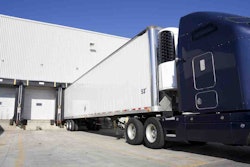I was attending Western Star’s launch of its eye-catching 5700XE aerodynamic truck in Las Vegas the other day, when an offhand remark by Ann Demitruk, the company’s director of marketing caught my attention. Ann noted that with automated manual transmissions rapidly gaining marketshare in Class 8 applications, it seemed to her that fleets and driving schools ought to use this fact as a marketing tool to help attract new drivers to the industry.
This struck me as an imminently sensible suggestion. And, it seems, it is a completely viable one: According to the FCMSA’s website, which I conveniently looked at just a few minutes ago, it is perfectly legal and acceptable to train, test and receive a Commercial Driver’s License without learning how to operate a heavy-duty manual transmission. The agency gives such drivers an “E” endorsement code on their CDLs, to indicate they are restricted to automatic transmissions only.
The thinking at the moment – both on the fleet and driver school side of the equation – seems to be that all drivers need to know how to operate a manual transmission. I called David Johnson, the president and chief instructor at my driving school, Premier Driving Academy in Theodore, Alabama, to get his thoughts on this idea.
As a graduate of the school, I was surprised to hear David tell me he still believes in training students on manuals because, in his opinion, it gives them a better overall feel for the vehicle. Additionally, he thinks it is vital for drivers to understand the mechanics and physics of up- and down-shifting. And, finally, as a point of pride, he wants to graduate fully trained drivers capable of operating any truck on the road today and – just as importantly from the students’ perspective – able to go after, and get any driving job they want.
At the same time, however, David admitted that automated transmissions can be a make-or-break factor for some students who don’t test well. And in limited cases – about 1 in 5 students, he estimates – he’ll let a student who is trained and proficient on a manual but nervous to use one with a examiner sitting in the passenger seat take the CDL driving exam with an automatic transmission. He mentioned a fleet he does business with that had recently dropped two competitive driving schools from its “acceptable” list, because those schools were sending Class E drivers to them – but the fleet doesn’t run any automatics. So, Johnson said, he had a vested interest in emphasizing manual training in his school.
All of which seems to prove Ann’s point: Bias against automatics still exists. And fleets, which desperately need drivers, are turning qualified candidates away because they can’t drive a manual transmission-equipped truck. Meanwhile, FCMSA policy clearly states that the ability to operate a manual transmission is not a requirement to obtain a CDL.
The basic question here seems pretty simple: If you’re running a fleet, which is more important: Your desire (or need) to run manual transmissions, or your need for drivers?
Taking a larger view, as an industry that is struggling to attract talent, perhaps highlighting the fact that Class E endorsements are a viable option for potential students can be a make-or-break move that encourages young and inexperienced drivers to make a leap and earn their CDLs.
But that’s only going to happen if this industry steps up and offers viable jobs to new drivers with “Automatic Only” endorsements on their CDLs.










